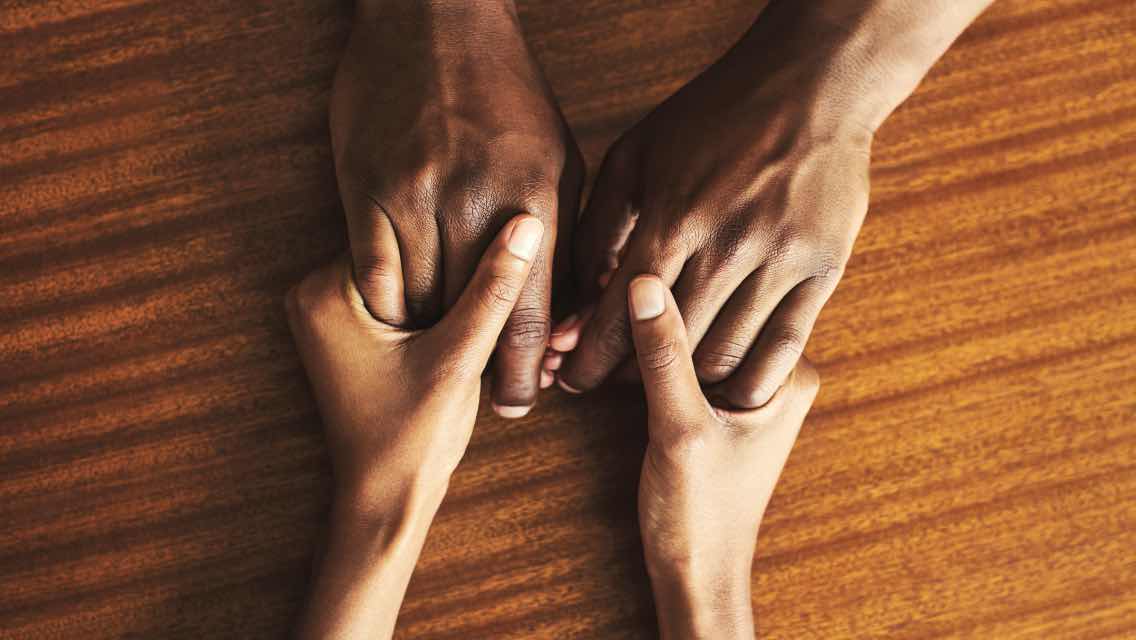Editor’s Note: The following story includes potential triggers and details of coping with an eating disorder. If you or anyone you know is struggling with an eating disorder, free help is available from the National Eating Disorders Association (NEDA) by call or text at 1-800-931-2237.
As an adult, I always knew I wanted to help others with eating disorders — personally, I’ve struggled with bulimia since I was 14 years old. First, though, I wanted to fulfill my lifelong dream of moving to another country and learning Spanish. So when an opportunity to live in Chile came about shortly after I finished college in October 2014, it seemed like the right move. I bought a one-way ticket and for 18 months made a living by teaching English.
During my time in Chile, I met some of my best friends in the entire world. It was through their kindness, joy, and support, along with the welcoming culture, that I began to find true peace with my body and food. I allowed myself complete food freedom and learned to eat intuitively. At 27 I was done with restricting, bingeing, and purging for good.
That time of liberation was so wonderful — and so different from how I had felt just a few months earlier.
Seeking Help
The previous spring, I was living in Austin, Texas. I had been teaching hot yoga for six years, and I decided to finish my degree at the University of Texas. Between classes, I would go from fast-food chain to health-food store and everything in between, carrying a liter of almond milk.
I ordered French fries, ice cream, smoothies — basically anything — and drank the almond milk with it to make it all come up easier when I purged. I spent a lot of money and wasted countless hours. At my lowest point, I binged and purged for 10 hours straight. I remember looking in the mirror afterward, tears streaming down my face, makeup smudged, eyes bloodshot, mouth red and irritated, and thinking, When will this end?
At that point, I had already been in and out of treatment twice, just a few years prior. I relapsed on and off for years, and I was struggling to maintain my sanity while teaching 90-minute yoga classes in the 105-degree heat and finishing my degree. Hot yoga had been a staple of my life since high school; it made me feel calm and in control, and it helped alleviate my depression. I thought a focus on my studies and teaching would distract me from my bulimia.
Managing the illness on my own, however, wasn’t working, but I was able to tap into the tools and resources I learned during my first time in treatment, at 23, when I spent 42 days at Shades of Hope in Abilene.
Understanding the Causes
My time at the treatment center and my own self-study revealed the main causes of my disorder: societal pressure to be thin and messaging from diet culture; influence from the yoga community to be fit; a family history of mental illness (including alcoholism and depression); childhood trauma; and sexual trauma.
Going through a week of therapy with my parents during the program was one of the best things we did. My father always had an explosive temper — his rage made it difficult to get close to him, and yet, he was still a great dad.
He taught me the concepts of meditation and yoga at an early age, which later helped me deal with my depression. Now that he’s learned to better control his temper, he rarely explodes. And I’m working diligently in my yoga practice and therapy sessions to ensure the pattern of rage ends with me.
My mother never spoke negatively about my weight, but she was always on a diet herself (despite being in a thin body). Lessons from her childhood caused her to overeat, which led to dieting, which started a vicious cycle that she vehemently tried to help me avoid. She constantly told me how beautiful I was, yet the disdain for her own body held far more influence than her compliments.
As a woman, I looked up to my mother to develop my own body image. My journey toward self-love and body acceptance has also helped my mom to gradually accept herself and her body. I pray it will do the same for my daughters.
Relapse and Recovery
About a year after treatment, I relapsed while I was back at school to finish my degree. My doctor had found an 8-centimeter dermoid cyst inside my right ovary, my then-boyfriend broke up with me, and I had finals going on, all at the same time — the stress was overwhelming. I remember thinking of running my car off the side of the highway. Instead, I turned to bingeing and purging as a way of coping and controlling my life.
How did I emerge from my lowest point and finally recover? Learning that “recovery is not linear” helped me a lot. I started therapy at 22 and treatment at 23, and then again at 24; for the next four years, I relapsed on and off. Thankfully, not only did my parents understand that my bulimia was a serious disease, but they were able to help me out financially with inpatient treatment, which is often not covered by insurance and isn’t feasible for many people. Treatment was critical for my healing; ongoing support online and in new communities also made a difference.
After my mindset shift in Chile, where I gained more confidence and joy around eating and living well, I was ready to return to the United States. I accepted a job as a flight attendant in 2016 and moved to New York.
That’s where I met the love of my life, Kyle, on a dating app. He made me laugh and didn’t play games; he was career-oriented and wanted a family — he was already an incredible father to his first daughter. We got married after a year of dating, and our daughter, Sydney Moon, was born in March 2019.
About seven months postpartum, I realized I had been suffering from perinatal anxiety and depression for quite some time. Through the positive support from my care team, I started taking Zoloft, which allowed me to function more joyfully. I knew from taking it in the past that this would help me maintain my eating-disorder recovery while boosting my confidence during the postpartum period.
I also sought ways to add in more movement, and in November 2019 I discovered pole dancing at a fitness studio in West New York. Along with ongoing therapy for depression, my pole classes have helped me avoid the triggers for relapses. Pole also helped give me the confidence to open my own business and become a certified eating-disorder coach.
My hope is that someone who is suffering from an eating disorder may read this and feel a little less alone and maybe even see some hope. Eating disorders have a death rate that’s among the highest of any mental illness, and yet they are also highly treatable. Recovery takes a lot of time, support, effort, self-compassion, and love — but it is possible.[/vc_column_text]
Casey’s Top 3 Success Strategies
- Get support. “Treatment centers are cost-prohibitive for many, but organizations like Project Heal and NEDA help spread education on weight stigma, as well as help people who need treatment the most to get it. Outside of centers and therapists, there are also eating-disorder coaches and online communities.”
- Address your history to change your story. “Being honest with my parents and identifying my influences has helped me be intentional in stopping the cycle of anger, dieting, and lack of support for mental illness.”
- Mind your media. “Seek out a community of like-minded people on social media who are also looking to distance themselves from diet culture. Checking out the tag #bodyacceptance is a good place to start.”
Tell Us Your Story! Have a transformational healthy-living tale of your own? Share it with us.





This Post Has 0 Comments